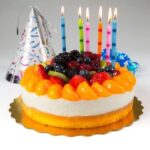Are you looking to elevate your cake decorating skills with a delicious and versatile frosting? In this article, we will dive into the world of whipped frosting and explore how to create the perfect whipped frosting for your cake decorating endeavors. Whether you’re a beginner or an experienced baker, mastering the art of whipped frosting can take your cakes to the next level.
Whipped frosting is a light and airy topping that is essential for achieving beautifully decorated cakes and cupcakes. It provides a smooth and creamy texture that not only enhances the appearance of your creations but also adds a delectable flavor. In this section, we will discuss the importance of whipped frosting in cake decorating and why it is a must-have in every baker’s repertoire.
Join us as we explore the key ingredients needed to create the perfect whipped frosting from scratch. We will discuss each ingredient’s purpose in achieving the ideal consistency, flavor, and stability for your frosting. Whether you prefer classic vanilla or want to experiment with unique flavors, our step-by-step tutorial will guide you through the process of making whipped frosting that perfectly complements your cake creations.
Key Ingredients for Whipped Frosting
Whipped frosting is a versatile and essential element in cake decorating, as it provides a smooth and creamy texture that can be easily piped or spread onto cakes and cupcakes. To achieve the perfect whipped frosting, it is important to use the right ingredients in the correct proportions. Here are the key ingredients needed to make whipped frosting from scratch, along with their purpose in creating the perfect consistency and flavor:
1. Confectioners’ Sugar: Also known as powdered sugar, this ingredient provides sweetness and helps to thicken the frosting. It also contributes to the smooth texture of the whipped frosting.
2. Unsalted Butter: Butter adds richness and creaminess to whipped frosting, enhancing its flavor and giving it a smooth consistency. It is important to use unsalted butter to have full control over the level of salt in the frosting.
3. Vanilla Extract: This ingredient adds flavor to the whipped frosting, giving it a delicious and aromatic taste. It is essential for creating a classic vanilla whipped frosting.
4. Heavy Whipping Cream: The heavy whipping cream adds lightness and airiness to the whipped frosting, helping it achieve a fluffy texture when whipped properly.
5. Salt: A pinch of salt helps balance out the sweetness of the powdered sugar and enhances the overall flavor of the whipped frosting.
When making whipped frosting for cake decorating, it’s important to ensure that all ingredients are at room temperature before starting. This will help them blend together smoothly and create a uniform texture. Additionally, using high-quality ingredients will result in a better-tasting and more visually appealing whipped frosting for your cakes and cupcakes.
Step-by-Step Tutorial
Whipped frosting is a light and fluffy topping that can take your cake decorating to the next level. It is important to understand the process of making whipped frosting from scratch, as well as tips for achieving the right consistency in order to ensure its success.
To make whipped frosting from scratch, you will need a few key ingredients: heavy cream, confectioners’ sugar, and vanilla extract. The heavy cream provides the base for the frosting, while the confectioners’ sugar adds sweetness and helps stabilize the whipped cream. The vanilla extract enhances the flavor of the frosting. It’s important to use these ingredients in their correct proportions to achieve the perfect texture and taste for your whipped frosting.
The first step in making whipped frosting is to chill your mixing bowl and beaters in the refrigerator for at least 15 minutes. This helps the heavy cream whip up faster and reach stiff peaks more easily. Once chilled, you will pour the heavy cream into the bowl, add the confectioners’ sugar and vanilla extract, then beat on high speed until stiff peaks form.
Be sure not to overbeat, as this can cause the frosting to become grainy. This step-by-step tutorial will guide you through how to make whipped frosting for cake decorating with ease.
| Ingredient | Purpose |
|---|---|
| Heavy Cream | Provides base for frosting |
| Confectioners’ Sugar | Adds sweetness and stabilizes whipped cream |
| Vanilla Extract | Enhances flavor |
Flavor Variation
When it comes to whipped frosting for cake decorating, there are endless possibilities for adding different flavors to create a truly delectable treat. While classic vanilla whipped frosting is always a go-to option, experimenting with various flavorings can elevate your cakes and cupcakes to the next level.
Some popular flavor variations for whipped frosting include chocolate, strawberry, lemon, coffee, and even mint. Each of these flavors can be achieved by incorporating extracts, cocoa powder, fruit purees, or instant coffee into your basic whipped frosting recipe.
In addition to traditional flavorings, you can also get creative with unique combinations such as caramel sea salt, pistachio, coconut lime, or raspberry almond. These unconventional flavor pairings can add an unexpected twist to your cake decorating projects and surprise your guests with unforgettable taste experiences. The key is to balance the sweetness of the frosting with the intensity of the added flavors to ensure a harmonious and delicious result.
As you explore different flavor options for whipped frosting, keep in mind that certain flavors may require adjustments in the amount of ingredients used. For example, if you’re incorporating a liquid fruit puree into your frosting, you may need to reduce the amount of other liquids in the recipe to maintain the desired consistency.
Similarly, using natural flavor extracts versus artificial ones can impact the overall taste and color of your whipped frosting. Experimentation is key when it comes to finding the perfect balance of flavors for your cake decorating creations.
| Flavor Option | Key Ingredients |
|---|---|
| Chocolate | Cocoa powder or melted chocolate |
| Strawberry | Strawberry puree or extract |
| Lemon | Lemon zest and juice |
Tips for Perfect Piping
Choosing the Right Piping Tips
When it comes to piping whipped frosting onto cakes and cupcakes, the right piping tips can make all the difference. For a smooth and sleek look, using a large round tip or a star tip is recommended. These tips are perfect for creating swirls, rosettes, and other decorative designs with your whipped frosting. It’s also important to ensure that your piping tips are clean and free from any dried frosting residue to prevent any clogging while you decorate.
Techniques for Piping Whipped Frosting
Before you start piping, it’s essential to practice on a separate surface to get the hang of applying even pressure and creating consistent shapes. When piping onto cakes, start from the outer edge and work your way towards the center in a circular motion for an elegant finish. For cupcakes, hold the piping bag directly above the center of the cupcake and gently squeeze from the middle outwards in a spiral motion.
Adding Texture and Dimension
To add texture and dimension to your cake decorating using whipped frosting, consider experimenting with different piping techniques. For example, you can create ruffles by holding the piping bag at a 45-degree angle and moving it back and forth while applying pressure.
Another technique is creating small peaks by applying gentle pressure to the bag and then pulling up quickly to form little peaks on top of your cake or cupcake. These techniques can add visual interest and elevate the overall look of your cake decorations.
By mastering these tips and techniques for piping whipped frosting onto cakes and cupcakes, you’ll be able to achieve professional-looking results that are sure to impress. With practice and patience, you can take your cake decorating skills to new heights using delicious homemade whipped frosting.
Troubleshooting Common Issues
When making whipped frosting for cake decorating, it’s not uncommon to encounter a few issues along the way. However, with the right techniques and troubleshooting tips, you can easily overcome these common problems. Here are some of the most frequent issues that may arise when making whipped frosting and how to fix them:
1. Overbeating: If you find that your whipped frosting has become grainy or curdled, it may be due to overbeating. To fix this issue, simply add a small amount of cream or milk to the frosting and gently fold it in until smooth. Be careful not to overmix once you’ve corrected the texture.
2. Runny Frosting: Sometimes, whipped frosting can turn out too runny, making it difficult to work with for cake decorating. To thicken the frosting, gradually add more confectioners’ sugar to the mixture until it reaches the desired consistency. Alternatively, you can refrigerate the frosting for a short period to allow it to firm up.
3. Frosting Too Stiff: On the other hand, if your whipped frosting is overly stiff and difficult to spread or pipe onto your cakes and cupcakes, simply add a small amount of heavy cream or milk and gently mix until the frosting becomes more pliable.
4. Air Bubbles: When piping whipped frosting onto your baked goods, air bubbles can sometimes form within the mixture, causing an uneven appearance. To prevent this issue, lightly tap the filled piping bag on a flat surface before using it to release any trapped air.
By addressing these common problems effectively, you can ensure that your whipped frosting turns out smooth, creamy, and perfect for all your cake decorating needs.
Storage and Shelf Life
Whipped frosting is a delightful addition to any cake or cupcake, but it’s essential to know how to store it properly to maintain its freshness. Proper storage can significantly affect the shelf life and quality of whipped frosting, ensuring that it remains light, airy, and delicious for cake decorating. In this section, we will discuss the best practices for storing whipped frosting and offer valuable advice on how to extend its shelf life.
Refrigerating Whipped Frosting
One of the most important considerations when storing whipped frosting is refrigeration. After making the frosting, it should be stored in an airtight container and placed in the refrigerator.
The cool temperature of the refrigerator helps maintain the stability of the whipped frosting, preventing it from melting or losing its structure. Be sure to cover the container tightly with plastic wrap or a lid to keep out any external odors or moisture that could affect the flavor and texture of the frosting.
Freezing Whipped Frosting
For those who want to prepare whipped frosting in advance or have leftover frosting after decorating a cake, freezing is a great option. To freeze whipped frosting, transfer it into an airtight container or freezer bag, ensuring that it is well-sealed to prevent freezer burn.
When ready to use, simply thaw the frozen whipped frosting in the refrigerator overnight before bringing it back to room temperature. It’s important not to microwave frozen whipped frosting as this can cause it to break down and lose its fluffy texture.
Shelf Life of Whipped Frosting
When stored correctly in the refrigerator, whipped frosting can last for up to 5-7 days before showing signs of deterioration. However, if stored in an airtight container and frozen, whipped frosting can last for up to 2-3 months without losing its quality. Always remember to check for any changes in color or smell before using refrigerated or frozen whipped frosting for cake decorating purposes.
By following these guidelines for proper storage and understanding its shelf life, you can ensure that your whipped frosting stays fresh and delicious for all your cake decorating needs. Whether you’re preparing ahead of time or saving leftovers for future use, knowing how to store and extend the shelf life of your whipped frosting will help you create beautiful and scrumptious desserts every time.
Creative Cake Decorating Ideas
In conclusion, learning how to make whipped frosting for cake decorating is an essential skill for any baker or cake decorator. By mastering the art of creating this light and airy frosting, you can take your cake decorating to the next level. From simple designs to elaborate creations, whipped frosting provides a versatile and delicious canvas for your creativity.
Whether you choose to make classic vanilla whipped frosting or experiment with different flavors, the key is to achieve the perfect consistency and stability. This allows you to execute various decoration techniques such as piping, rosettes, and intricate designs. By following the step-by-step tutorial and incorporating the key ingredients in the right proportions, you can create a smooth and creamy whipped frosting that is ideal for cake decorating.
Furthermore, understanding how to troubleshoot common issues that may arise during the process of making whipped frosting is crucial. This knowledge will help you avoid potential pitfalls and ensure that your frosting turns out flawless every time.
Additionally, by exploring different flavor variations and creative cake decorating ideas, you can elevate your desserts and impress your friends and family with beautifully decorated cakes and cupcakes. With the right techniques and tips for perfect piping, you’ll be well on your way to becoming a skilled cake decorator who can confidently showcase their talent using homemade whipped frosting.
Frequently Asked Questions
Is Whipped Icing the Same as Whipped Frosting?
Whipped icing and whipped frosting are not exactly the same. Whipped icing typically contains less sugar and fat than traditional frosting, giving it a lighter texture. However, both can be used for similar purposes in cake decorating.
How to Make Regular Frosting Whipped?
To make regular frosting whipped, you can start by whipping it with an electric mixer for several minutes until it becomes light and fluffy. You can also add a small amount of heavy cream or milk to help achieve a lighter consistency.
Can You Decorate a Cake With Whipped Frosting?
Yes, you can definitely decorate a cake with whipped frosting. It may be a bit softer than traditional buttercream, so it’s important to ensure that the cake is well-chilled before decorating and that any decorations are added just before serving to prevent them from sinking into the frosting.

Welcome to my blog about home and family. This blog is a place where I will share my thoughts, ideas, and experiences related to these important topics. I am a stay-at-home mom with two young children. I hope you enjoy reading it! and may find some helpful tips and ideas that will make your home and family life even better!





